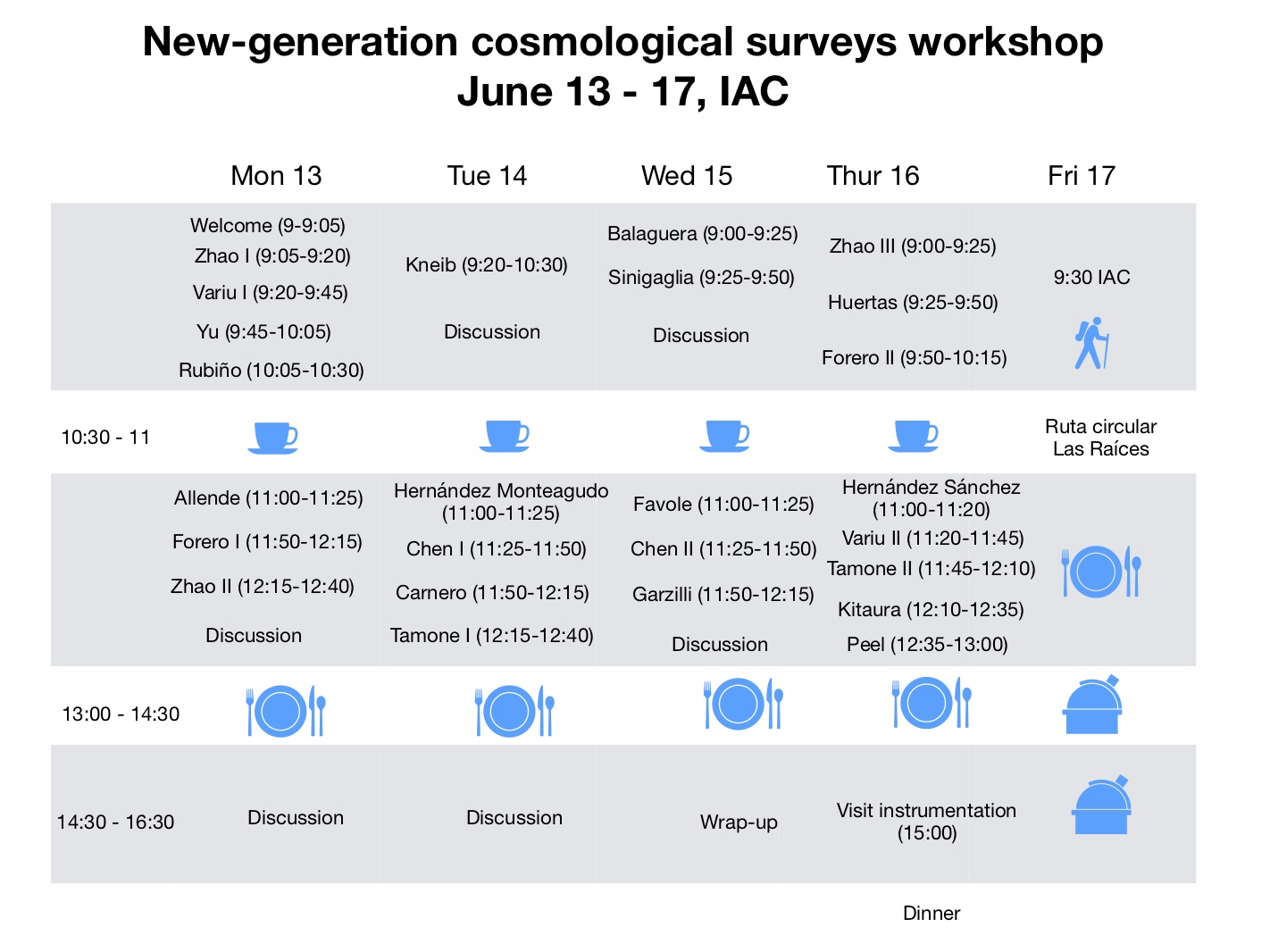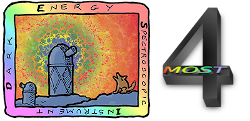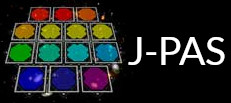Programme

- Rubiño: CMB studies from the Teide Observatory
- Kneib: Robotic systems to probe the Universe
- Allende: DESI: Instrument Characteristics, Survey and Project Status
- Balaguera: The Bias Assignment Method: mock catalogs with machine learning algorithms
- Carnero: The Dark Energy Survey. Summary and current status
- Zhao (I): An overview of DESI projects led by the LASTRO group
- Zhao (II): Fast Correlation Function Calculator: a high-performance toolkit for cosmological clustering measurements
- Zhao (III): Cosmology with multi-tracer BAO from SDSS galaxies and voids
- Variu (I): Pre data-analysis steps for large spectroscopic surveys: simulating the Universe and selecting targets
- Variu (II): Numerical models for cosmic voids
- Tamone (I): RSD multi-tracer analysis
- Tamone (II): Quasar voids
- Favole: Modelling galaxy clustering and weak lensing in multi-tracers surveys
- Forero (I): Tracer selection effects on cosmic void clustering and BAO measurements
- Forero (II): Improving mass resolution of halo catalogues with machine learning
- Yu: SHAM for 1% DESI data
- Chen (I): Subtracting foreground and systematics from HI intensity maps using machine learning
- Chen (II): Impact of thermal SZ effect on cross-correlations between Planck CMB lensing and SDSS galaxy density fields
- Sinigaglia: Mapping baryons onto dark matter fields for Lyman-akpha forest catalog generation
- Peel: Mapping large angular scales at radio frequencies
- Kitaura: Joint multi-tracer analysis
- Garzilli: Detecting WDM with the Lyman-alpha forest
- Huertas: Machine and deep learning overview and applications in cosmology/galaxy formation (TBD)
- Hernández-Monteagudo: The Universe in 60 colours: the first steps of J-PAS
- Hernández-Sánchez: Reconstructing the primordial density field with higher order Hamiltonian Monte Carlo sampling



